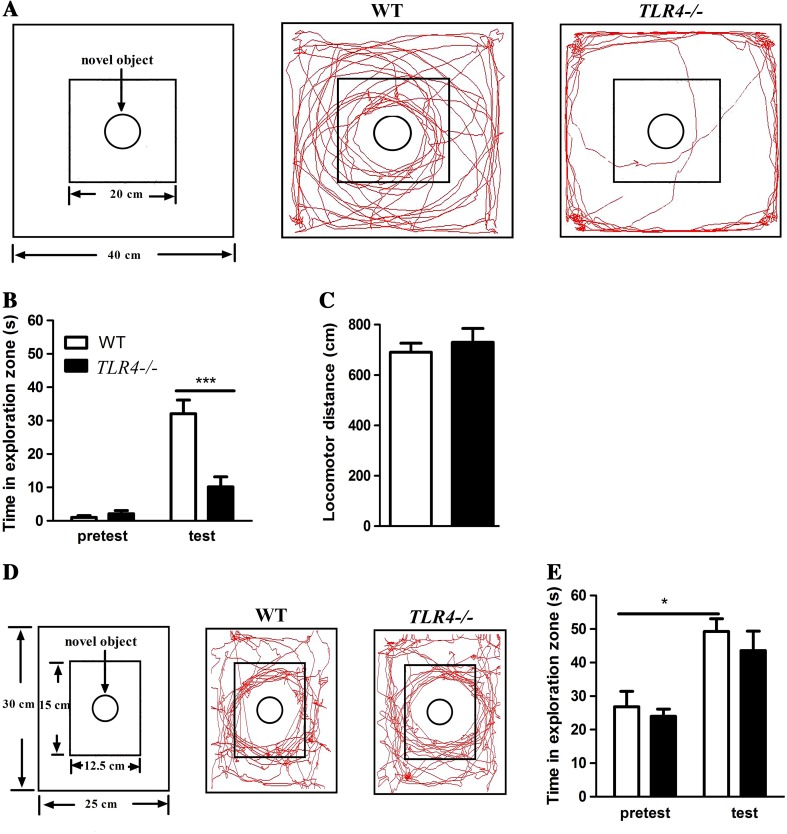Fig. 1.
TLR4 deficiency caused a reduction in novelty-seeking behavior in mice. A. Representative tracings of WT (middle panel) and TLR4 −/− mice (right panel) performing the novelty-seeking task in the large apparatus (left panel). B. Bar graphs showing the time WT (n = 8) and TLR4 −/− (n = 7) mice spent in the exploration zone in the 3-min novelty-seeking test phase in the large apparatus. C. The locomotor distances of WT and TLR4 −/− mice in the 3-min novelty-seeking test phase in the large apparatus. D. Representative tracings of WT (middle panel) and TLR4 −/− mice (right panel) performing the novelty-seeking task in the small apparatus (left panel). E. Bar graphs showing the time WT (n = 8) and TLR4 −/− (n = 6) mice spent in the exploration zone in the 3-min novelty-seeking test in the small apparatus. *P < 0.05, ***P < 0.001.

